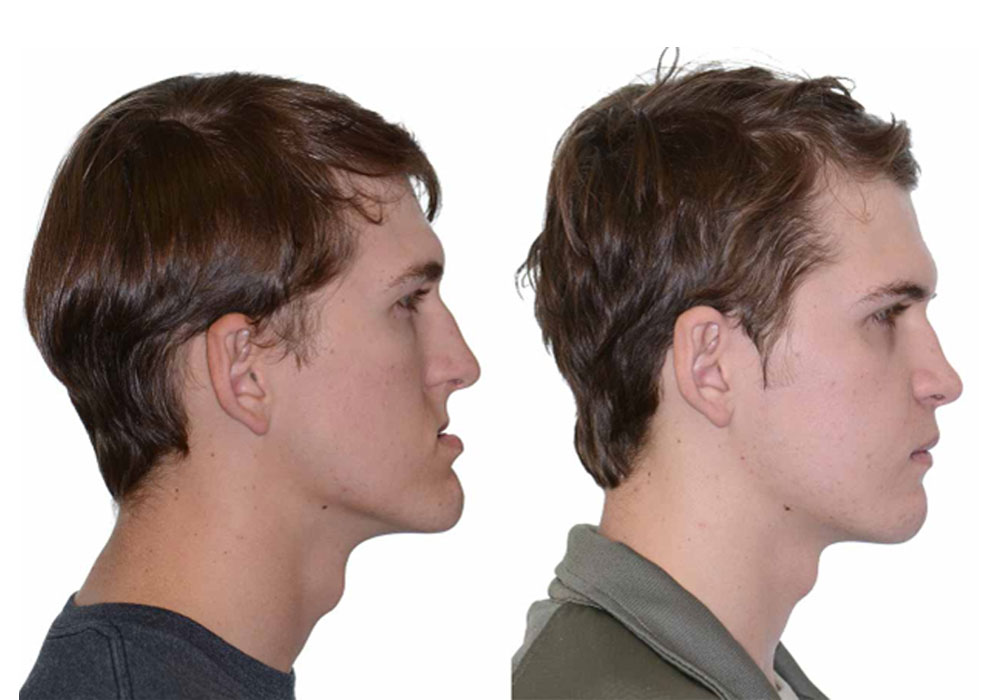As the human body ages, changes occur and signs of aging appear, signs such as changes in the shape of the chin and jaw, loosening of the skin, reduction of facial fat and muscle weakness, all of which indicate the natural process of aging. With the development of technology in the field of medicine, various methods for skin rejuvenation have been created, one of the most popular of which is jaw and face angulation.
The angulation of the jaw (Orthognathic) comes from the Greek word (Orthos) which means “to straighten” and (Gnathic) which means “jaw”. Orthogenetics or angulation of the jaw is a set of procedures that ultimately lead to the improvement of the appearance of abnormalities in the jaw and its beautification. There are many methods for facial angulation, including filler, buccal fat, liposuction, and fat injection, which can be chosen by consulting a specialist doctor.
People who feel dissatisfied with the appearance of their jawline or chin may want to make changes in those areas. Jaw fillers, a type of injectable dermal filler, can provide a non-surgical solution. A rounded chin and jaw can be caused by factors such as age or genetics. Jaw and chin fillers can add angle, symmetry or balance to these areas, especially in profile.
But not all gels and the ability of all those who inject these gels are the same. It’s important to know what jaw fillers can and can’t do so you don’t end up with results you don’t like.
In this article, we’ll look at the different jaw angulation methods available and what you can expect from the results.
- What is angularization and how is it done?
The changes that are made on the jaw to make the jaw more elongated and form a “V” shape is called jaw angulation.
Jaw surgery, also known as (orthognathic) surgery, corrects missing jawbones and realigns the jaws and teeth to improve how they function. Making these corrections may also improve the appearance of your face.
If you have jaw problems that cannot be solved with orthodontics alone, jaw surgery may be a corrective option. In most cases, you will also have orthodontic wires on your teeth before surgery and during recovery after surgery until healing and alignment are complete. Your orthodontist can work with an oral, maxillofacial surgeon to determine a treatment plan.

In fact, in addition to surgery, jaw angulation is also performed by slimming the face or highlighting the cheek and chin. Needless to say, apart from the beauty aspect, this procedure also has a therapeutic aspect and is used for people who have problems in the jaw and face in an accident or congenitally. As mentioned above, in general, the following methods can be used for angulation of the jaw:
Filler (gel)
Fillers usually contain hyaluronic acid or calcium and are absorbed by the body over time (remains in the body for about 1 to 2 years) and need to be injected again after some time. Angularization with gel injection is a simple and outpatient procedure that usually takes less than 30 minutes. You can inject the gel the same day after the initial consultation session.
In this method, gel injection in the jaw and chin is done with local anesthesia and it is painless because the doctor uses numbing cream on the desired area so that you do not feel pain. Then the doctor uses a special syringe to inject the gel in the chin area. Depending on the structure of your chin and the expected results, you may need several steps of gel injection.
After the injection, a person should not splash water on his face and be exposed to excessive heat for several hours. (Between 1 and 2 weeks after injection) It is also prohibited to manipulate the injection area.
Removal of oral fat (buccal fat)
This procedure is a simple and outpatient procedure that is performed with local anesthesia and in a short period of time. The purpose of this surgery is to remove the fat tissue inside the mouth, reveal the cheek protrusion and angle the jaw.

Liposuction
In liposuction, the fat tissue between the skin and muscles is removed, which improves the shape of the face. Liposuction in the jawline area can create an angle in this area.
Fat Injection
Fat injection is a solution that is a suitable option for angularizing round and non-angular faces. In this method, the fat taken from the person’s body is injected into the desired areas such as cheeks, chin and jaw and creates the desired volume in these areas.
1. For whom is angularization suitable?
In general, any person who has good general health and has decided to correct the shape of his jaw, can be a good option for gel injection. Only if a person has a certain disease or is taking a certain medicine or pregnant women, they may be exposed to risks and side effects and it is better to consult a doctor before injecting.
2. Side effects of chin gel injection
In general, gel injection does not have serious or dangerous side effects if it is performed in a reputable clinic and by a specialist doctor; But in some people, a different diet and different types of activities may cause swelling or bruising, which will disappear with some care in the shortest possible time. Hyaluronic acid filler injection does not cause complications in the body because these substances can be absorbed in the body.
General side effects of filler injection:

Bruise
Some people worry about bruising after filler injections. The main cause of bruising is the use of certain drugs such as aspirin that cause blood thinning. If there is no problem, the person can minimize the possibility of this problem by stopping the medicine one week before the filler injection. It should be noted that the use of these drugs does not interfere with the injection of the gel and it is mentioned only for your information.
Redness and swelling

Swelling and inflammation caused by filler injection varies depending on the person’s skin type and the amount of work done on the face, and will eventually disappear within 24 hours after the injection.
